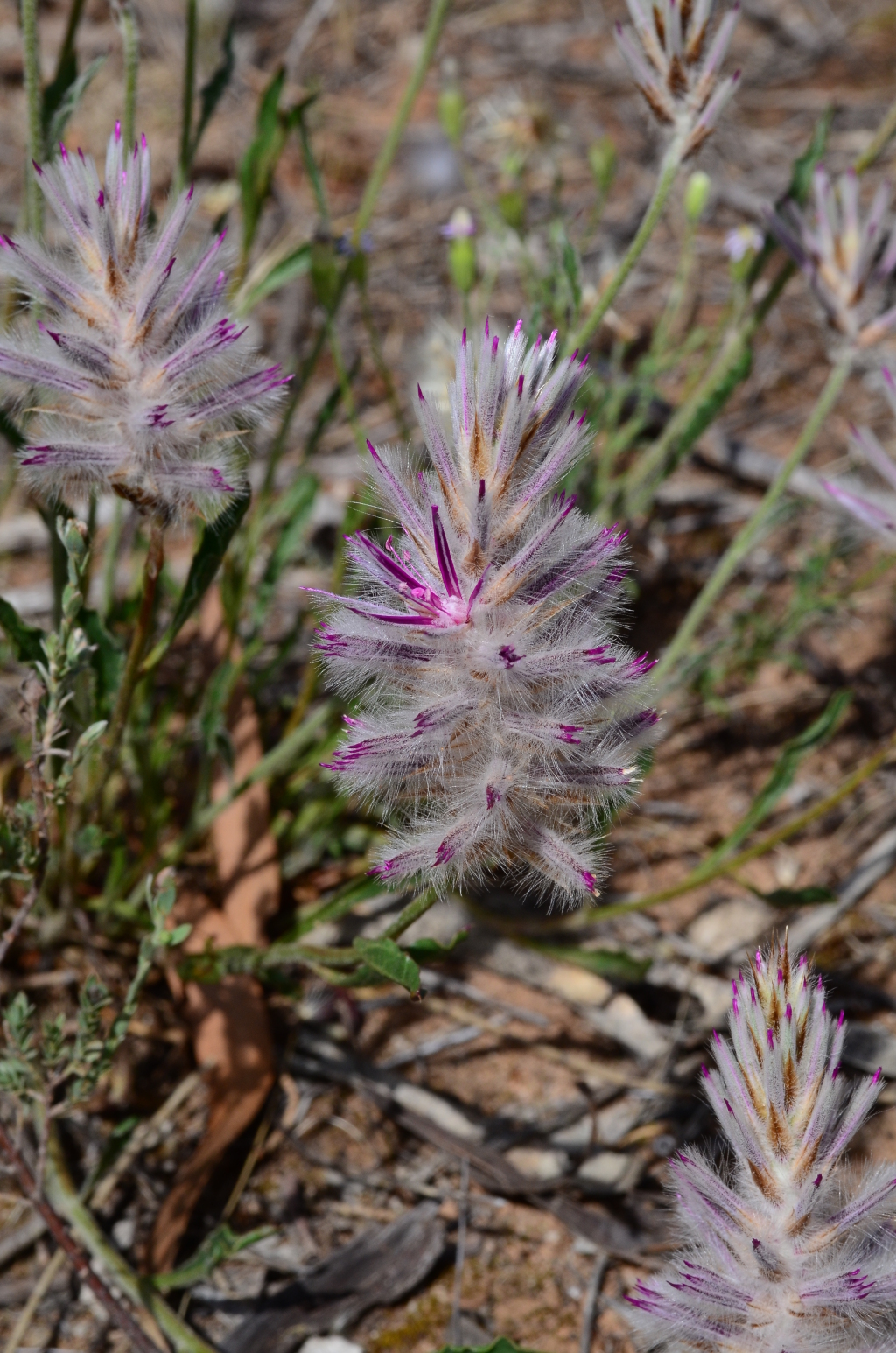Ptilotus semilanatus
(Lindl.) F.Muell. ex J.M.BlackPerennial herb to c. 40 cm high, with annual stems arising from a much-branched, woody rootstock. Stems glabrous or glabrescent. Basal leaves narrowly oblanceolate, long-attenuate at base, the largest 20–6 mm long, 3–5(–7) mm wide, glabrous, with or without a terminal mucro to c. 0.5 mm long, margins sometimes undulate; stem leaves similar but smaller and relatively wider (to c. 8 mm). Spike erect, hemispherical or ovoid (rarely cylindrical), 10–30(–60) mm long, 30–40 mm diam., dense, pink to mauve; bract ovate, 4–6 mm long, with mucro 0.5–1 mm long; bracteoles broad-ovate, equal to bract; perianth 14–19 mm long; tepals united at base into a hardened cup c. 2 mm long, otherwise free, outer surface with long, silky hairs, overlying a denser layer of short barbed hairs that extend to the base (where slightly longer), inner surface glabrous except for a loose woolly tuft at base; fertile stamens 3; ovary supported on stipe as long as basal cup of perianth, sparsely pubescent at summit, style 9–12 mm long, eccentric to central. Flowers Oct.–Jan.
LoM, MuM, Wim, VRiv, MuF, Gold, CVU, GGr, NIS. Occasional on loamy or clayey soils in north and north-western Victoria, but rare in the Mallee proper, then mostly confined to heavier soils of dune swales.
Previously included as a variety or subspecies of Ptilotus exaltatus and plants of intermediate morphology exist.
Walsh, N.G. (1996). Amaranthaceae. In: Walsh, N.G.; Entwisle, T.J., Flora of Victoria Vol. 3, Dicotyledons Winteraceae to Myrtaceae, pp. 199–215. Inkata Press, Melbourne.
 Spinning
Spinning

